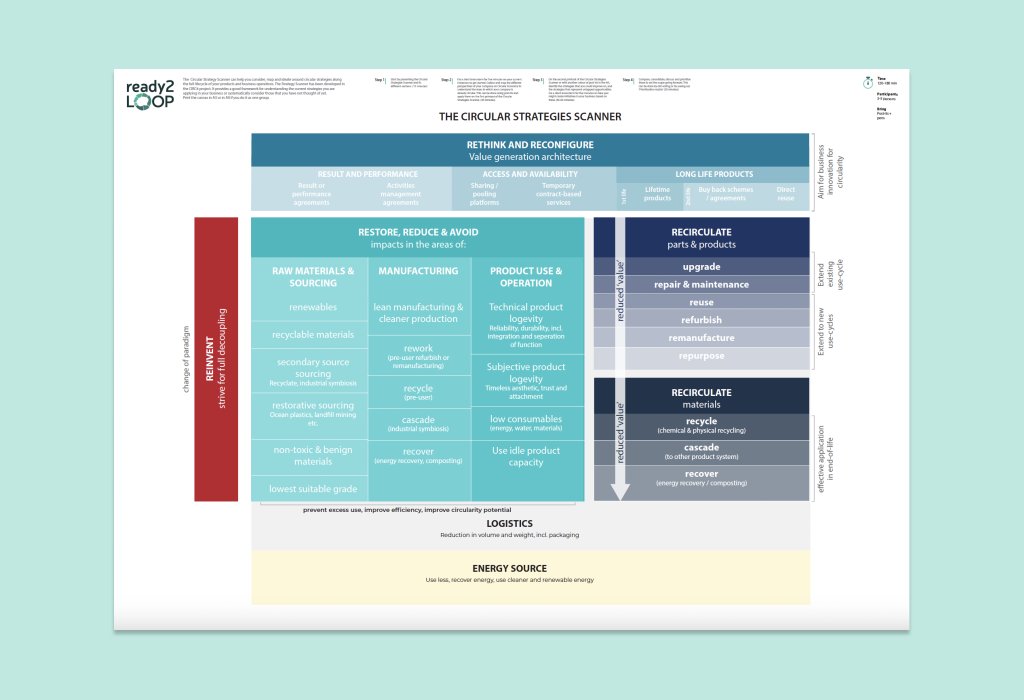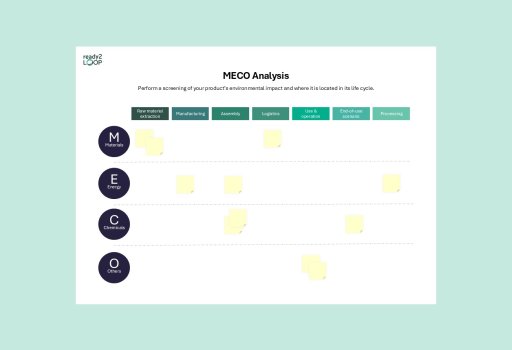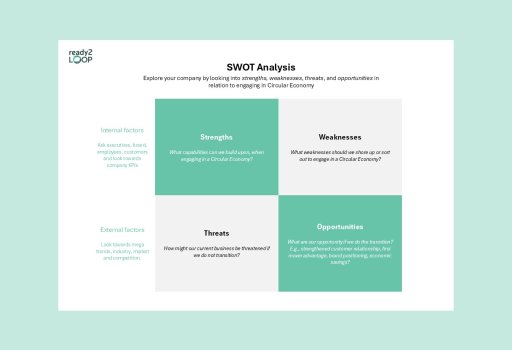The Circular Strategy Scanner
Become inspired with a comprehensive overview of Circular Economy strategies.
BEGIN WORKING WITH TOOL
Want to download tools freely?
Click the button and assess your company to access all the tools and to get a customised transition path and tools just for you.

What is the tool about?
Use the framework to gain a comprehensive understanding of circular strategies, map current initiatives and future opportunities. The Circular Strategies Scanner is a framework developed as a contribution to Circular Economy transition methodology. The scanner provides a taxonomy of circular strategies for manufacturing companies engaging with circular economy integration and it serves to:
1) Create a comprehensive understanding of circular strategies
2) Map current Circular Economy initiatives
3) Generate ideas for increased circularity.
The Circular Strategies Scanner can be used in a workshop to describe the currently applied circular strategies for a product or service in your organisation while aligning perceptions throughout the organisation. Subsequently this mapping can be used as the starting point for a scanning of new opportunities to enhance or append additional Circular Economy strategies, thereby support the formulation of shared vision for circular oriented innovation.
The tool has been developed with manufacturing companies participating in the CIRCit project, specifically to establish a clear vision as part of the action research to set a direction for the further work with the companies.
The valuable outcome
The Circular Strategy Scanner can help you consider, map and ideate around circular strategies along the full lifecycle of your products and business operations. It provides a good framework for understanding the current strategies that you are applying in your organisation or systematically consider those that your organisation have not thought of yet.
Preparation for use
It is recommended that the facilitator read and understands the article and the Circular Strategies Scanner prior to the workshop as it introduces the terminology, that you need to understand to get the full value from using the tool.
Preparation Time: 1-2 hour
Competencies involved: Business development, business innovation, sector-specific knowledge, technology, life cycle thinking.
Tool kit: Print either one big A0 of the canvas or two copies of the canvas in A3 for each group (3-5 people). Bring pens and post-its in two colours.
The steps to take
Step 1: The facilitator starts by presenting the Circular Strategies Scanner and its different sections (15 minutes).
Step 2: Do a silent brainstorm for five minutes on your organisation's current initiatives to get started. Collect and map the different perspectives of your company on Circular Economy to understand the ways in which your organisation is already circular. This can be done using post-its and apply them on the first printout of the Circular Strategies Scanner (30 minutes).
Step 3: On the second printout of the Circular Strategies Scanner or with another colour of post-its on the A0, identify the strategies that your organisation could improve on, and the strategies that represent untapped opportunities. Do a silent brainstorm for five minutes on how you might create initiatives in your organisation based on these (30-60 minutes).
Step 4: Compare, consolidate, discuss and prioritise these to set the scope going forward. This can be done by dot-voting or by using our 'Prioritization matrix' (30 minutes).
Time: 2-3 hours
Keywords
circular strategies framework; closed loop; resource productivity; manufacturing companies; innovation
Source article
Title: Developing a circular strategies framework for manufacturing companies to support circular economy-oriented innovation
Authored by: Fenna Blomsma, Marina Pieroni, Mariia Kravchenko, Daniela C.A. Pigosso, Jutta Hildenbrand, Anna Rùna Kristinsdottir, Eivind Kristoffersen, Sasha Shahbazi, Kjartan Due Nielsen, Anna-Karin Jönbrink, Jingyue Li, Carina Wiik, Tim C. McAloone in 2019
Journal of Cleaner Production 241 (2019) 118271
Can be found here: https://bit.ly/3bQh8mb
Decision level
- Strategic
- Tactical
- Operational
Participation
- Individual
- Team
Phase of transition path
- Explore strategic opportunities
- Define direction
- Develop initiative
- Evaluate & plan implementation



